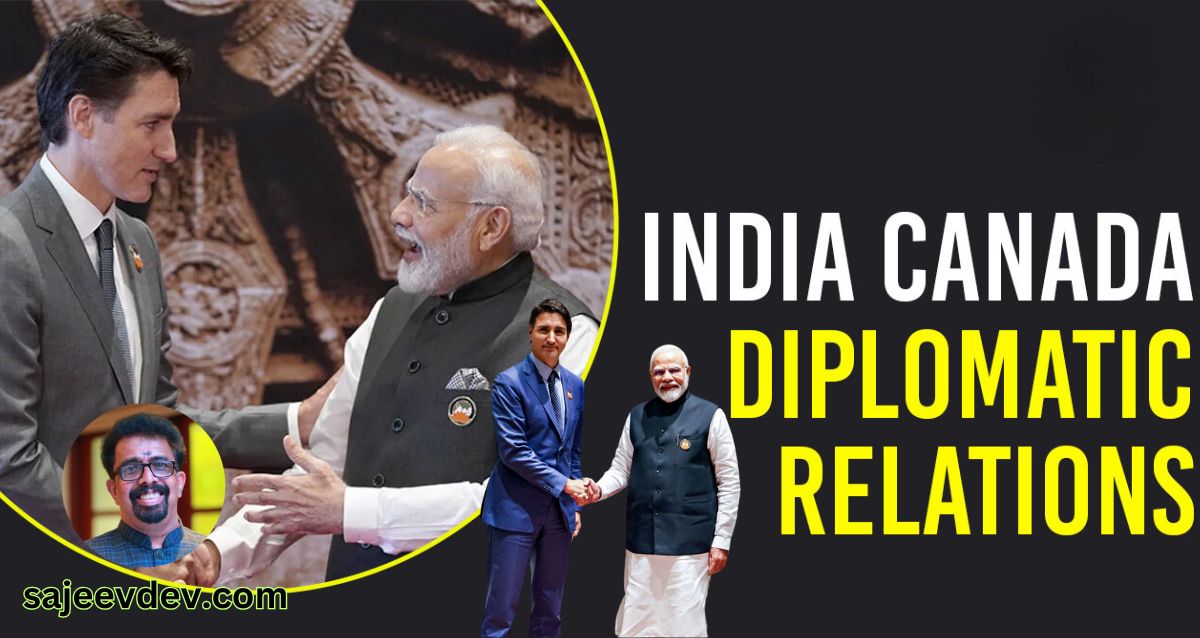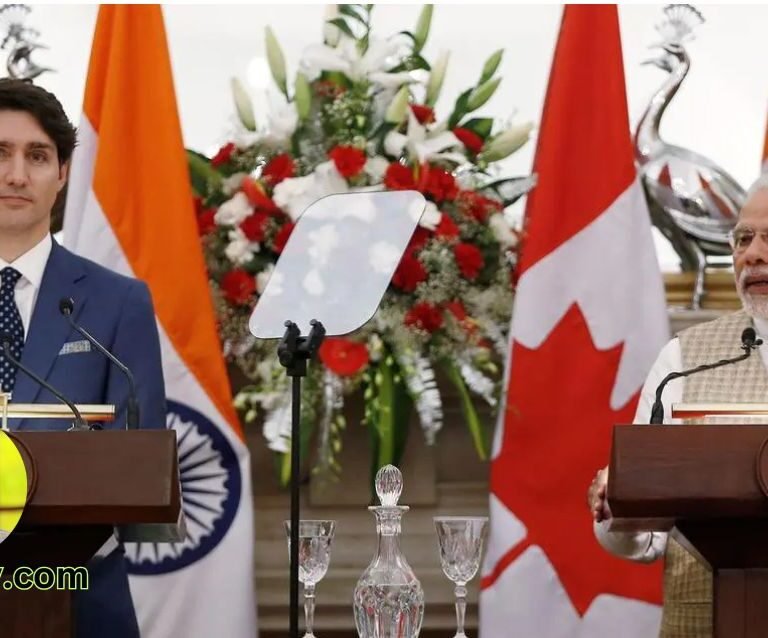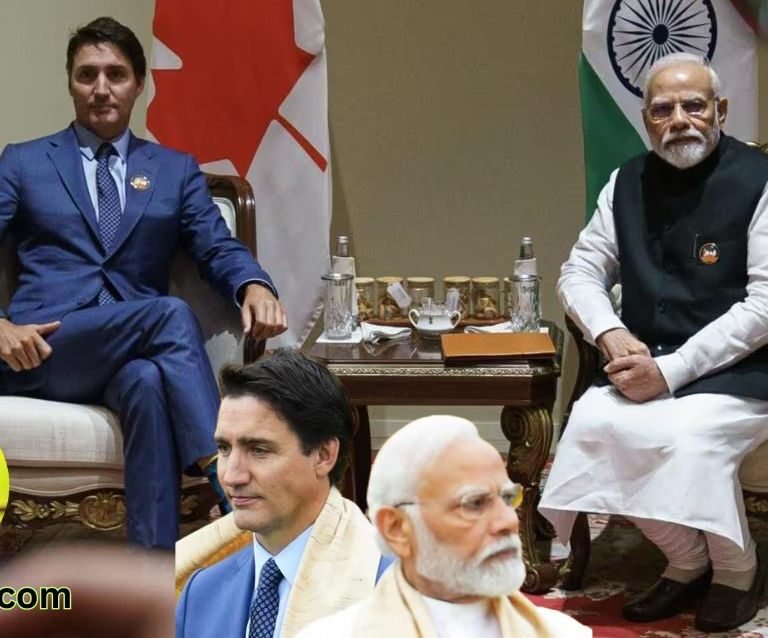The diplomatic relationship between India and Canada has evolved significantly since the establishment of formal ties in 1947, coinciding with India’s independence
The diplomatic relationship between India and Canada has evolved significantly since the establishment of formal ties in 1947, coinciding with India’s independence. Initially founded on shared values such as democracy and multiculturalism, the partnership has seen substantial developments over the decades. One of the early milestones was the signing of the Comprehensive Economic Partnership Agreement (CEPA) negotiations, which aimed to enhance trade and investment, reflecting both nations’ interests in fostering stronger economic ties.
In the 1980s, cooperation reached new heights as Canada actively engaged in India’s Green Revolution, assisting in agricultural development. This period also marked a growing recognition of the Indo-Canadian diaspora, which contributed to cultural and social exchanges between the two countries. During the 1990s, strategies for scientific and technological collaboration were implemented, leading to joint initiatives in research and development.
As we progressed into the 2000s, India and Canada further solidified their relations through numerous bilateral agreements encompassing various sectors such as education, public health, and environmental sustainability. Notably, the two nations worked together on climate change initiatives, demonstrating their commitment to global challenges. The culmination of these efforts is seen in the Strategic Partnership established in 2015, aiming to bolster trade, security, and defense cooperation. With both countries having significant roles in regional stability and international diplomacy, understanding their reciprocal relationship is crucial.
The current diplomatic tensions, though rooted in historical interactions and differing perspectives, highlight the fragility of international relations. Both India and Canada must navigate these complexities while recognizing the importance of collaboration in trade and diplomatic engagement on the global stage. The outcome of these tensions may have broad implications not only for bilateral relations but also for wider geopolitical dynamics.
The Emergence of Sikh Separatism and the Khalistan Movement
The Khalistan movement, advocating for an independent Sikh state in the Punjab region, originates from a complex tapestry of historical grievances, socio-political dynamics, and cultural aspirations. The roots of Sikh separatism can be traced back to various socio-political tensions that have existed since the partition of India in 1947. The partition not only led to significant demographic changes in Punjab but also caused deep-seated mistrust among communities. The feeling of neglect by central authorities, particularly among Sikhs, further fueled desires for identity and autonomy.
During the late 1970s and early 1980s, the movement gained momentum partly due to unrest regarding perceived injustices faced by the Sikh community. The situation escalated with the demand for greater political representation and cultural recognition within the Indian state. Notably, the events surrounding Operation Blue Star in 1984, which aimed to remove Sikh militant leader Jarnail Singh Bhindranwale from the Golden Temple, created a formidable rift between the Sikh community and the Indian government. This incident is often seen as a significant turning point in cementing support for the Khalistan cause, marking the movement as not merely political but deeply infused with religious sentiments.
The Sikh diaspora, particularly in Canada, has become a significant support base for the movement. This expatriate community often reflects the socio-economic challenges faced in their homeland, amplifying calls for Khalistan. Additionally, international platforms provided by countries like Canada allow for broader discussions about Sikh identity and rights. Recent developments in diplomatic relations between India and Canada have further brought this movement into the spotlight, as Canadian political sentiments often resonate with the aspirations of the Sikh community. The clash between India’s stance on separatism and Canada’s more supportive approach creates a tense backdrop for ongoing discussions regarding Sikh separatism, heightening diplomatic tensions.
Allegations and Counter-Allegations
The recent diplomatic tensions between India and Canada have been largely ignited by allegations surrounding the assassination of Hardeep Singh Nijjar, a prominent Sikh separatist leader. Canadian Prime Minister Justin Trudeau has made significant claims, suggesting that the Indian government may have been involved in Nijjar’s killing, which occurred in British Columbia in June 2023. Trudeau’s assertions have prompted widespread media coverage and have fueled debates regarding India’s actions on foreign soil, shedding light on the ongoing disputes rooted in issues of national sovereignty and security.
In response to these allegations, the Indian government has firmly rejected any involvement in the assassination, characterizing the accusations as baseless and motivated by political motives. Indian officials have emphasized that such claims undermine the integrity of India’s diplomatic relationships and could potentially exacerbate existing tensions. The Indian Ministry of External Affairs has called Trudeau’s statements “preposterous,” arguing that they implicate India in a manner that is both unfounded and harmful to the established norms of international relations.
The disagreement reflects deeper ideological divides, particularly regarding the treatment of Sikh separatist movements and regional terrorism concerns. Canada hosts a significant Sikh diaspora, and the Canadian government has been criticized by India for allegedly providing a safe haven to individuals who are viewed as proponents of extremism. On the flip side, Canada maintains that it is committed to upholding the rights of its citizens, regardless of their political affiliations, and champions its principles of free speech and political dissent.
As the situation evolves, both nations face the challenge of navigating these complex allegations and counter-allegations. The implications of Trudeau’s claims extend beyond bilateral ties, raising questions about international norms around state-sponsored actions and the responsibilities incumbent upon governments in addressing such sensitive issues.
Impact on Diplomatic Relations
The current diplomatic tensions between India and Canada have led to a significant downturn in bilateral relations, marked by various actions that have compounded the strained atmosphere between the two nations. One of the most immediate outcomes has been the expulsion of diplomats from both countries, which reflects the escalating nature of the diplomatic rift. This expulsion serves not only as a punitive measure but also as a clear signal of discontent between respective governments, indicating an unwillingness to engage in constructive dialogue.
Furthermore, both governments have made public statements that reveal the extent of their grievances. Canadian officials have labeled India’s actions as aggressive, while Indian authorities have countered with accusations regarding Canadian interference in domestic matters. Such statements contribute to a negative perception, exacerbating mistrust and reducing the chances of future negotiations. In international diplomacy, the rhetoric used can play a critical role in shaping relations, and the current exchanges suggest a deteriorating partnership.
Additionally, trade talks between India and Canada have been effectively put on hold amid these tensions. The suspension of discussions not only affects economic ties but also sends a message to businesses and investors regarding the stability and predictability of the bilateral partnership. A strong trade relationship often depends on robust diplomatic engagements, and with trade discussions stalling, the potential for collaboration in sectors such as technology, energy, and agriculture appears bleak. The freezing of trade talks underscores the broader implications of strained diplomatic relations, suggesting that both nations may face economic repercussions as a consequence of their political discord.
In conclusion, the repercussions of the current diplomatic tensions have undoubtedly transformed the landscape of India-Canada relations. Each decision and statement made by either government will have lasting implications, influencing not only the immediate context of their relationship but potentially reshaping future engagements.
Economic Consequences of the Tensions
The ongoing diplomatic tensions between India and Canada hold significant implications for the economic landscape of both nations. Trade partnerships, a cornerstone of bilateral relations, are likely to be adversely affected. In the fiscal year 2021-2022, trade between India and Canada surpassed CAD 8 billion, encompassing a range of sectors including technology, agriculture, and education. As the diplomatic rift deepens, exporters and importers in both countries may face heightened uncertainty. Tariffs or quota restrictions could emerge as potential measures, disrupting the flow of goods and services.
One of the sectors poised to experience ramifications is technology. Canada houses a burgeoning tech industry, with many Indian firms investing in Canadian startups and innovation hubs. The strained relationship may deter further investment from Indian companies, which could have a cascading effect on technological advancements and collaborative projects, thus limiting growth opportunities for both nations.
Similarly, agriculture—a critical area of interchange—could suffer setbacks. Canada is a significant exporter of agricultural products to India, while Indian agriculture benefits from Canadian advancements in farming practices and technologies. Any retaliatory measures or decreased cooperation could harm farmers in both countries, leading to food supply chain disruptions and potential price hikes.
The large Indian diaspora residing in Canada plays a pivotal role in maintaining economic ties. This community not only contributes to the Canadian economy through various industries but also serves as a bridge for exports from India. Heightened tensions may lead to diminishing trust and collaboration between these two communities, inhibiting mutual business opportunities that benefit both economies.
In conclusion, the economic consequences of the current diplomatic tensions between India and Canada are vast and multifaceted. If unaddressed, these challenges could lead to a prolonged period of economic uncertainty and a loss of growth potential within vital sectors.
Public Sentiment and Its Role
Public sentiment in both India and Canada has become increasingly polarized in the wake of rising diplomatic tensions. In India, nationalism plays a significant role in shaping public opinion. Many citizens perceive their government’s actions as a defense of national integrity and security, particularly in relation to separatist sentiments that emanate from the Sikh diaspora. Consequently, narratives emphasizing unity and patriotism are prevalent, often overshadowing calls for dialogue or understanding. The government’s position is often supported by a considerable segment of the population, who view external critiques as undermining India’s sovereignty.
In contrast, Canadian public opinion regarding the tensions is complex, shaped significantly by the principles of freedom of expression and multiculturalism. Many Canadians, including those from the Sikh community, advocate for the rights of individuals to express their opinions without fear of reprisal. They argue that discussions relating to political and cultural grievances should be conducted openly. This sentiment appears to resonate with those who perceive the Indian government’s measures as repressive. The Sikh community, in particular, is deeply engaged in narratives that reflect their identity while also emphasizing the importance of dialogue over discord, creating a layered perspective that is often at odds with mainstream narratives.
Moreover, social media platforms in both countries have amplified these sentiments, often becoming battlegrounds where individuals express their views vehemently. This situation has resulted in the emergence of echo chambers that reinforce existing beliefs, thereby complicating any potential for mutual understanding. As public sentiment continues to evolve, the narratives surrounding nationalism, freedom of expression, and cultural identity will undoubtedly play critical roles in shaping the future of Indo-Canadian relations. The ongoing dialogue, or lack thereof, between these two nations will heavily rely on the perceptions and attitudes of their respective citizens.
International Reactions and Mediation Efforts
The diplomatic tensions between India and Canada have not gone unnoticed on the global stage, prompting reactions from various nations and international organizations. The ongoing dispute, fueled by allegations of interference and espionage, has sparked a range of responses that reflect the intricate web of geopolitical alliances and interests at play. Nations across Europe, Asia, and North America have voiced concerns regarding the deteriorating relationship, emphasizing the need for dialogue to prevent further escalation.
Countries such as the United States and Australia have expressed support for Canada, advocating for a peaceful resolution based on mutual respect and adherence to international norms. Conversely, China has seized the opportunity to criticize India, revealing the delicate balancing act countries must perform when addressing conflicts involving major powers. The reaction from the international community highlights the delicate nature of diplomacy, where taking sides can have significant ramifications for bilateral relations and regional stability.
Given the complexity of the situation, mediation efforts may play a pivotal role in resolving the discord. Various international bodies, including the United Nations, are well-positioned to facilitate dialogue and bring both parties to the negotiating table. Moreover, regional alliances such as the Commonwealth can provide a space for discussion, helping to mitigate tensions by promoting understanding and collaboration. Key principles of international law, including the principles of sovereignty and non-interference, can guide these efforts by reminding stakeholders of the importance of respecting national boundaries while engaging in constructive dialogue.
Ultimately, for mediation to be effective, a willingness from both India and Canada to engage in discussions is crucial. The situation represents not just a bilateral issue but also a test of the international community’s ability to respond to conflicts in a manner that promotes peace and stability. As the world watches, the hope is that through concerted international efforts, a pathway toward reconciliation can be established, highlighting the importance of diplomacy in resolving disputes.
Long-term Outlook: Resolution Possibilities
The current diplomatic tensions between India and Canada present a complex geopolitical landscape, necessitating a multifaceted approach to resolution. One potential pathway involves enhancing diplomatic dialogue between the two nations. Establishing a consistent channel for communication can help both parties address misunderstandings and grievances directly. Engaging in regular diplomatic discussions at various levels may pave the way for a more constructive relationship, fostering an environment where concerns can be voiced openly and respectfully.
An integral part of resolving these tensions also includes social initiatives aimed at bridging the divide between the two nations’ citizens. Cultural exchanges and joint community projects could help to foster mutual understanding and respect. By promoting a narrative that emphasizes shared values and interests, the countries can work towards reducing societal rifts that often fuel diplomatic discord. Investing in educational programs that highlight the significance of diversity and coexistence could further strengthen societal bonds.
Economic cooperation is another essential aspect of a successful resolution. By recognizing the interdependence of their economies, both India and Canada can work towards establishing trade agreements that benefit both parties. Economic dialogues could facilitate discussions on trade barriers and investment opportunities, allowing each country to gain mutual economic advantages while diminishing tensions. Additionally, international cooperation through platforms like the United Nations can amplify both nations’ efforts to address the underlying issues at play.
Ultimately, any long-term resolution will require commitment from both governments to prioritize dialogue, respect for domestic policies, and mutual acknowledgement of each other’s perspectives. By harnessing diplomatic, social, and economic measures, India and Canada can seek a more harmonious future that respects each nation’s sovereignty while addressing core concerns effectively.
Strengthening Future Ties
As we reflect on the current diplomatic tensions between India and Canada, it is essential to recognize the historical significance of the relationship that these two nations share. Over the years, India and Canada have built a diverse partnership characterized by trade, cultural exchanges, and mutual respect. This relationship has fostered numerous opportunities that benefit both countries and their citizens, creating a foundation that can withstand temporary challenges.
Amidst escalating tensions, it is imperative for both nations to engage in constructive dialogue and diplomacy. Addressing the underlying issues through negotiations can potentially alleviate misunderstandings and pave the way for renewed collaboration. By prioritizing open communication and emphasizing shared values, India and Canada can work towards restoring trust and fostering a more resilient diplomatic framework. This collaborative approach not only serves both nations’ interests but also reinforces their commitments to multiculturalism and a rules-based international order.
The potential benefits of resolving the ongoing tensions are considerable. Strengthening bilateral ties can lead to increased trade, expanded investment opportunities, and greater cultural understanding. For Canada, maintaining strong connections with India can enhance its position in the Asian market while for India, a cooperative relationship with Canada can further solidify its network in North America. Additionally, by focusing on common goals, such as sustainable development and security partnerships, both nations can contribute to global stability.
In conclusion, it is crucial that India and Canada recognize the value of their historic relationship and work diligently to overcome current diplomatic challenges. By doing so, they can lay the groundwork for a promising future marked by collaboration, mutual respect, and shared prosperity. The path to strengthening future ties will require commitment, but the advantages of a harmonious relationship are well worth the effort.









